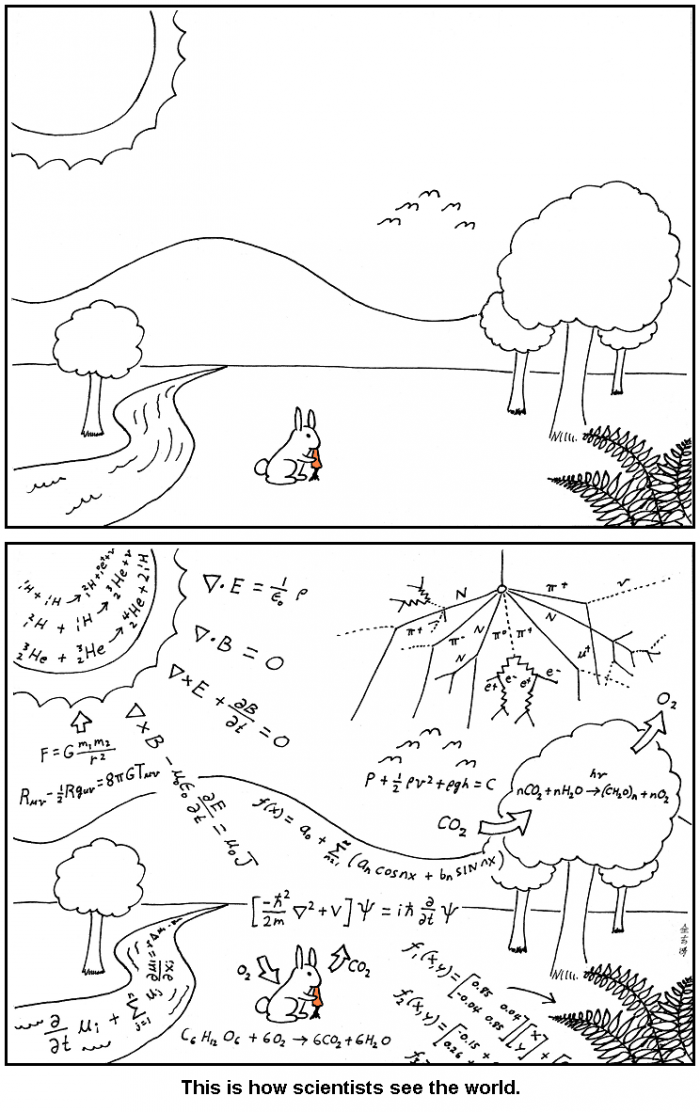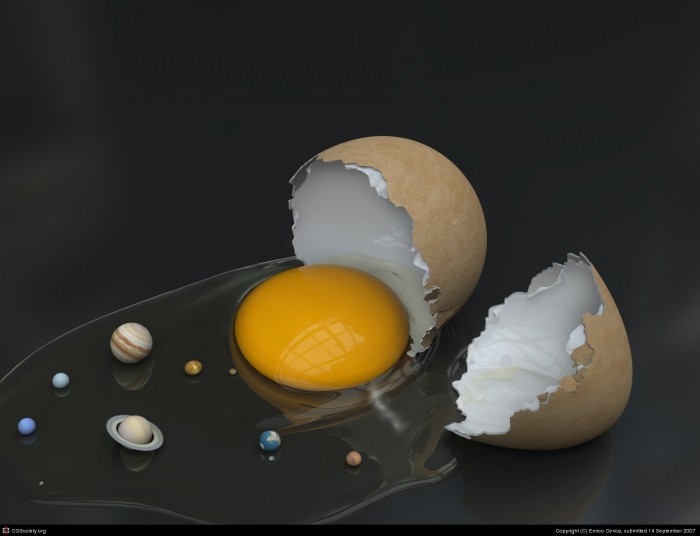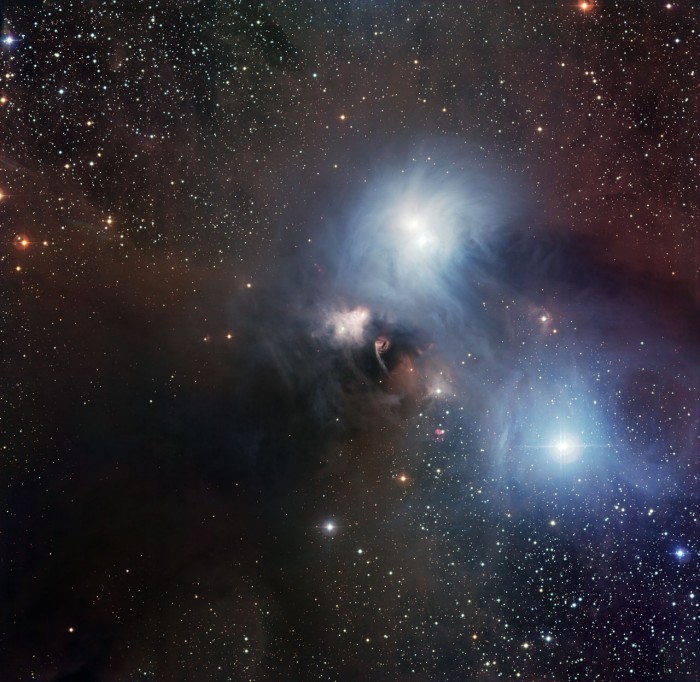R Coronae Australis
From ESO:This magnificent view of the region around the star R Coronae Australis was created from images taken with the Wide Field Imager (WFI) at ESO’s La Silla Observatory in Chile. R Coronae Australis lies at the heart of a nearby star-forming region and is surrounded by a delicate bluish reflection nebula embedded in a huge dust cloud. The image reveals surprising new details in this dramatic area of sky.
How Scientists View the World

Science is a way of thinking much more than it is a body of knowledge.
- Carl Sagan
Hayabusa Spacecraft Entering the Atmosphere
This is how it looks when a spacecraft like Hayabusa enters the Earth’s atmosphere:
Sparkles!
A group of astronomers from NASA, the Japan Aerospace Exploration Agency (JAXA) and other organizations had a front row seat to observe the Hayabusa spacecraft’s fiery plunge into Earth’s atmosphere. The team flew aboard NASA’s DC-8 airborne laboratory, packed with cameras and other imaging instruments, to capture the high-speed re-entry over an unpopulated area of central Australia on June 13, 2010. The Japanese spacecraft completed its seven-year, 1.25 billion mile journey to return a sample of the asteroid Itokawa.
Hydrogen in the M51 Galaxy
From NASA APOD:Perhaps the original spiral nebula, M51 is a large galaxy, over 60,000 light-years across, with a readily apparent spiral structure. Also cataloged as NGC 5194, M51 is a part of a well-known interacting galaxy pair, its spiral arms and dust lanes clearly sweeping in front of companion galaxy NGC 5195 (top). This dramatically processed color composite combines M51 image data from the Calar Alto Observatory’s 1.2 meter telescope. The data include long exposures through a narrow hydrogen alpha filter that trace emission from atomic hydrogen. Reddish hydrogen emission regions, called HII regions, are the regions of intense star formation seen to lie mainly along M51’s bright spiral arms. Intriguingly, this composite also shows red hydrogen emission structures in the faint features extending even beyond NGC 5195, toward the top of the frame.
Credit: CAHA, Descubre Foundation, DSA, OAUV, Vicent Peris (OAUV / PixInsight), Jack Harvey (SSRO), Steven Mazlin (SSRO), Carlos Sonnenstein (Valkanik), Juan Conejero (PixInsight).



